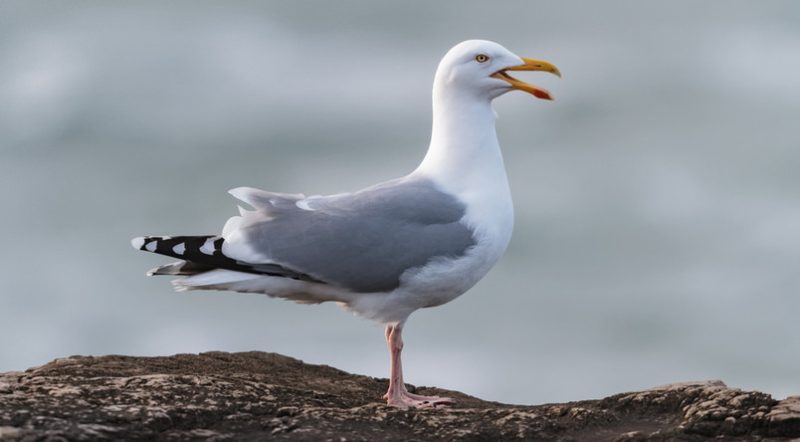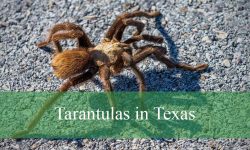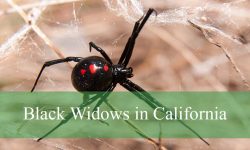Seagulls are a constant presence along Massachusetts’ shoreline, filling beaches, harbors, and rocky coastal towns from Cape Cod to Gloucester with their calls and sweeping flight. Yet behind their familiar calls and bold behavior lies a set of surprisingly complex habits shaped by coastal ecology, tidal rhythms, and shifting human environments. Many Massachusetts visitors underestimate just how intelligent, adaptable, and socially coordinated these birds truly are.
Massachusetts hosts several gull species, with the most common being the herring gull, great black-backed gull, laughing gull, and ring-billed gull. Their presence increases dramatically during summer when food availability peaks and nesting colonies expand across coastal islands and marshes. These gulls are opportunistic, capable of learning quickly, and deeply influenced by the state’s changing shoreline ecosystems. Their behaviors encompass feeding strategies, communication rituals, territorial displays, nesting cycles, and interactions with humans—all of which shape their remarkable success.
Below are ten detailed seagull habits observed across Massachusetts beaches that reveal just how sophisticated these coastal birds really are.
1. Seagulls Depend Heavily on Tidal Cycles for Daily Foraging

Rising and Falling Tides Shape Their Feeding Windows
Massachusetts gulls schedule much of their daily activity around the timing of tides. At low tide, beaches expose sand flats, tide pools, and rocky crevices filled with stranded fish, crabs, mussels, and invertebrates. Gulls capitalize on this bounty by spreading out across exposed shoreline areas.
As tides rise, gulls move to higher perches.
Their feeding strategy is synchronized with predictable tidal rhythms.
They Exploit Newly Exposed Habitats After Storms
When nor’easters or summer squalls churn up the coast, gulls immediately gather along the beach to feed on washed-up organisms. These storm-driven feeding events can supply enough food for days.
Massachusetts beaches are ideal for this opportunistic scavenging.
Storm debris often attracts gulls in large flocks.
Tidal Movements Help Reduce Competition
Low tide disperses food sources across wide areas, reducing aggression between gulls. High tide funnels them closer together, increasing calls, displays, and competitive behaviors.
The tide’s influence extends beyond feeding.
It shapes their social interactions throughout the day.
2. Massachusetts Gulls Are Highly Opportunistic Feeders
They Eat Nearly Anything Edible
Seagulls consume fish, marine invertebrates, shrimp, shellfish, carrion, insects, fries from beachgoers, dropped snacks, and food waste near fishing docks. This broad diet allows them to thrive in both wild beaches and human-modified areas.
Their adaptability makes them resilient in changing environments.
This varied feeding habit contributes to their coastal success.
They Hunt Actively When Conditions Allow
When schools of fish swim near the surface, gulls switch from scavenging to diving, dipping, or surface-plunging. They may follow fishing boats to catch discarded bycatch or leftover bait.
Their foraging mode changes with opportunity.
Seasonal fish migrations intensify this behavior.
They Steal Food From Other Birds
Known as kleptoparasites, gulls frequently chase terns, other gulls, and cormorants to steal freshly caught prey. This strategy requires speed and timing rather than hunting skill.
Massachusetts beaches see this behavior daily.
Social dynamics influence who steals from whom.
3. Gulls Use Complex Vocal Signals to Communicate
Their Calls Convey Territory, Alarm, and Social Status
Seagulls are highly vocal birds with a diverse sound repertoire—laughing calls, sharp cries, long wails, and soft grunts. Each call communicates specific meaning, whether warning of predators, claiming a nesting spot, or coordinating with flock members.
Massachusetts colonies rely heavily on these acoustic signals.
Sound carries far across windy beaches.
Vocalizations Intensify During Breeding Season
From late spring into early summer, gull colonies on islands such as Muskeget or Monomoy Lighthouse explode with noise. Mates call to each other, parents warn intruders, and chicks beg loudly for food.
The beach soundscape becomes a constant chorus.
These vocal cues help maintain colony structure.
Young Gulls Learn Calls Gradually
Juvenile gulls do not produce full adult calls. Instead, their early sounds resemble squeaks and shortened versions of adult cries. As they mature, they learn timing, tone, and call context.
This learning process is essential for survival.
Communication skill influences adult dominance.
4. They Display Sophisticated Social Behavior in Flocks
Hierarchy Determines Feeding Rights
Within large groups, older and larger gulls—especially great black-backed gulls—dominate feeding sites. Subordinate gulls wait for scraps, approach cautiously, or relocate to less competitive zones.
Dominance reduces injury and maintains social order.
These hierarchies are especially visible around fishing piers.
They Cooperate Informally During Foraging
While not truly cooperative hunters, gulls often track each other’s behavior. If one bird finds food, nearby gulls immediately swoop in. This “information transfer” helps individuals exploit new resources quickly.
This semi-cooperative strategy benefits the group.
Food spread becomes more efficient across the flock.
Group Size Changes With Season
During summer, Massachusetts beaches attract thousands of gulls. Winter reduces food availability, causing flock sizes to shrink or disperse inland.
Seasonality shapes their social structure.
Gulls adapt fluidly to population shifts.
5. Nesting Behavior in Massachusetts Is Highly Site-Specific
Most Nests Are Built on Coastal Islands
Gulls avoid nesting directly on busy public beaches. Instead, they choose islands, dunes, gravel bars, and marshy edges—areas with fewer predators and minimal human disturbance.
Massachusetts hosts major colonies off Cape Cod and the Boston Harbor Islands.
Nesting success depends on location stability.
They Use Simple Nests Made of Grass and Debris
Gull nests are shallow bowls lined with dried grass, seaweed, and beach vegetation. Some nests incorporate driftwood, feathers, or plastic debris unintentionally collected from beaches.
Nesting materials reflect local habitat conditions.
Despite simplicity, nests provide effective insulation.
Nesting Season Is Noisy and Highly Territorial
Parents defend nests aggressively using calls, postures, and diving displays. Intruders—even other gulls—are met with fierce resistance.
This territoriality protects vulnerable eggs and chicks.
Nesting zones become dense and tightly regulated.
6. Gulls Raise Their Chicks With Unexpected Coordination
Both Parents Share Chick-Raising Duties
Male and female gulls alternate feeding, guarding, and guiding their chicks. They regurgitate partially digested food, providing easy-to-eat meals for the young.
This shared responsibility increases chick survival.
Parental roles remain balanced throughout the season.
Chicks Learn Beach Navigation Quickly
Within days, gull chicks wander short distances from nests. Their speckled brown plumage keeps them camouflaged against sand and rocks.
Parents keep close watch despite the chick’s mobility.
Learning the environment is essential for fledging.
Fledging Takes Several Weeks
Young gulls do not gain full flight ability until late summer. Until then, they depend on parents for food and protection.
This lengthy development period requires secure nesting areas.
Massachusetts islands offer reliable habitat for growth.
7. Seagulls Are Extremely Intelligent and Adaptable
They Recognize Patterns in Human Behavior
Massachusetts gulls quickly learn where people eat, when fishermen unload catches, and which trash bins overflow after beach events. Their memory and learning abilities guide daily routines.
Human activity becomes part of their foraging strategy.
They adjust behavior based on observed opportunities.
They Use Tools and Problem-Solving
Some gulls drop shellfish onto rocks or pavement to crack them open. Others dip food in water to soften it or steal food only when humans look away.
These learned behaviors spread through gull populations.
Intelligence contributes to their ecological success.
They Adapt to Changing Shorelines
Rising sea levels, erosion, and shifting sandbars alter Massachusetts coastline habitats. Gulls respond by relocating nests, changing feeding areas, or adjusting seasonal migration patterns.
Adaptability ensures long-term population stability.
Coastal dynamics shape their life strategies.
8. Gulls Play an Important Ecological Role on Massachusetts Beaches
They Control Populations of Fish and Marine Invertebrates
As predators and scavengers, gulls help regulate coastal prey populations. Their feeding limits overabundant species and keeps ecosystems balanced.
Their influence extends across tidal food webs.
Gulls serve as natural coastal regulators.
They Clean Up Carcasses and Organic Debris
By consuming dead fish and washed-up marine organisms, gulls prevent excessive decay and reduce the spread of disease.
This scavenging role benefits both wildlife and beach health.
They are part of the natural cleanup system.
They Are Prey for Larger Predators
Owls, eagles, foxes, and coyotes commonly prey on gull eggs and chicks. This keeps gull populations in check and maintains ecological balance.
Their presence strengthens predator-prey interactions.
Beaches support a dynamic coastal food chain.
9. Human Interaction Strongly Influences Gull Behavior
Feeding Gulls Creates Long-Term Behavioral Change
Human feeding teaches gulls to associate people with food. This can increase aggression, disrupt natural foraging, and draw large flocks to busy beaches.
Massachusetts officials discourage gull feeding.
Such behavior shifts ecological balance.
Trash and Outdoor Dining Attract Gulls
Improperly secured trash bins, open food containers, and beachfront restaurants provide constant food sources. Gulls respond by spending more time in human areas.
Urban gull populations grow faster under these conditions.
This overlap heightens nuisance conflicts.
Efforts to Manage Gull Populations Are Ongoing
Protective measures include covered trash bins, public education, and reducing fish waste at docks. These strategies help restore natural gull behavior.
Management reduces dependence on human food.
Ecological balance improves when gulls forage naturally.
10. Seasonal Migration Patterns Shape Gull Presence on Massachusetts Beaches
Some Species Stay Year-Round
Herring gulls and great black-backed gulls are permanent residents. Their populations swell in summer and thin slightly in winter.
Resident gulls anchor coastal ecosystems.
They adapt to year-round weather cycles.
Others Arrive Only During Breeding Season
Laughing gulls migrate north in spring to breed on coastal islands. Their presence peaks in early summer, especially around marshes and barrier islands.
Migration aligns with prey abundance.
These species leave in late summer or early fall.
Winter Brings Different Gulls
In colder months, ring-billed gulls become more common, moving from inland lakes or northern breeding grounds. They concentrate around harbors, reservoirs, and city waterfronts.
Massachusetts winters create shifting gull communities.
Seasonality affects species composition across beaches.
FAQs About Seagulls in Massachusetts
Are seagulls dangerous to people?
Not usually. Most aggression is linked to food or nest protection.
Why are gulls so loud on beaches?
Calls communicate territory, alarms, and social cues.
Do seagulls migrate in and out of Massachusetts?
Yes, some stay year-round while others migrate seasonally.
Why do gulls steal food?
They are opportunistic feeders and learn to exploit easy meals.
Where do gulls nest in Massachusetts?
Mainly on coastal islands, marshes, and dunes.
What do gulls eat naturally?
Fish, shellfish, crabs, insects, and washed-up marine organisms.
Are gulls protected by law?
Yes. All gull species are protected under the Migratory Bird Treaty Act.
Why do gulls follow fishing boats?
They scavenge discarded bait and fish scraps.
Conclusion
Seagulls on Massachusetts beaches are far more complex than their coastal reputation suggests. Their tidal foraging strategies, vocal communication, nesting habits, intelligence, and ecological roles reveal a bird deeply adapted to the rhythms of the Atlantic coastline. By understanding these ten important habits, residents and visitors can better appreciate the intricate behaviors that define gull life—from early-morning hunts across low-tide flats to the noisy energy of summer nesting colonies.
Gulls are not merely beachside visitors; they are dynamic ecological participants that reflect the health of Massachusetts’ coastal ecosystems. Appreciating their behaviors encourages coexistence and a richer understanding of life along the state’s shoreline.






